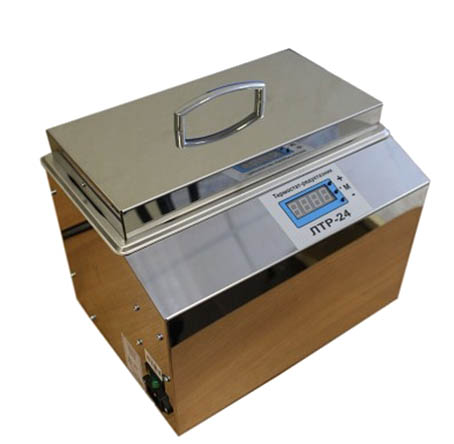Why U.S. Beef Prices Are Hitting Record Highs

Tom Winter opened his burger truck in Missoula, Montana, nearly two years ago, focusing on selling locally grown food at an affordable price to local residents.
As the business , Gary's Local Burgers, expanded to three locations, Winter kept the price of his burgers at $6, a figure he posted on large signs.
But last month, the company printed new signs with a new price: $6.95.
The average price of ground beef hit a record high of $5.98 per pound in May, according to the Bureau of Labor Statistics. That price was up 16.2% from a year earlier. Other types of ground beef, such as chuck steaks and chuck, also hit record highs in the first half of 2025.
Although Winter buys beef and sells burgers locally, he hasn't been able to escape the market, which has become more expensive to operate . Prices have risen because the number of cattle suitable for beef production is at its lowest since the 1950s.
The U.S. beef cattle herd is 27.9 million HEAD, down 13% from 2019, according to the Department of Agriculture. The total cattle population is at its lowest level since 1952. Consumer demand has remained stable in recent years.
"I made a personal commitment that we would keep the price at $6, but I had to backtrack and raise it 95 cents," Winter said of his burgers, adding, "We just didn't understand how prices could do that."
Most cattle ranchers are small businesses and do not have the capital to make large investments or to weather price fluctuations. According to 2022 USDA data, the average cattle herd is 47 head. Large cattle ranches (100 or more head) account for 10.5% of all beef production operations.
The decline in livestock numbers is the result of a decade-long livestock cycle that includes drought, processing plant closures and changing consumer preferences.
Ranchers made big profits in 2014 and increased their cattle herds over the next five to six years, said Ted Schroeder, a professor of agricultural economics at Kansas State University.
But as supply increased, cattle prices fell for ranchers just as drought began to hit the western United States. With less grass for cattle to graze, ranchers had to buy more feed to feed their herds, driving up costs. As the drought continued, many ranchers decided to sell some of their cattle and reduce their herds.
Meatpacking plant closures have left processors with fewer livestock to feed, driving down prices for livestock farmers. Pandemic-induced disruptions in 2020 have slowed the meatpacking industry and driven up costs.
Now, cattle ranchers are starting to rebuild their herds to take advantage of the high prices. But it’s a slow process—it takes two to three years to raise a calf for slaughter—so beef prices are likely to remain high for the foreseeable future. The U.S. Department of Agriculture projects that cattle prices will remain high through 2026, and retail beef prices will be high for several more years.
Companies that buy large volumes of beef have responded in different ways. McDonald's, Sysco and other cattle companies and groups have sued major meatpackers, alleging that they colluded to raise prices. The processors deny the allegations but have settled some lawsuits for tens of millions of dollars without admitting guilt.
Supermarkets like Costco and Walmart are increasingly involved in the entire MEAT supply chain. Walmart has invested in a slaughterhouse in Nebraska and on Monday opened its first meat-packing plant in Olathe, Kansas. A Walmart spokeswoman said the new plant will help ensure a steady supply of beef for the company’s stores.
However, what is a nuisance to shoppers in line at the supermarket is a boon to cattle producers, as some are thriving after years of stagnation. “Cattle have been doing very well lately,” said Blake Albers, founder of Albers Craft Meats in Norfolk, Neb.
The Albers family owns a large cattle feedlot (a feedlot) and a small plant that flavors, cuts and packages beef, which they sell in their store and online . Albers said his store still attracts regular customers, but he has had to make some changes to keep them despite rising prices.
He said some customers are opting for smaller portions to save money, adding that it's difficult to offer a smaller steak that's still thick and attractive. The butcher has increased the size of some cuts, such as the ribeye, so customers can cut it at home into bite-size portions for multiple meals.
Albers said he also sold 10 pounds of individually wrapped prime beef at a discount, figuring he could charge a lower markup for larger orders. And if a customer bought a lot of steaks, he'd add ground beef at a lower price.
"The price for premium ground beef should be $7, but we can get to $5.09 and $5.99 if we include it in a package with the animal," he said.
Despite rising beef prices, consumer incomes have increased slightly, meaning some people can afford to spend more on hamburgers.
But not everyone can afford it, and that's keeping Winter, the owner of Gary's Local Burger, a little awake at night. He said his prices are on par with McDonald's, adding that in a city where the cost of living is rising, he's pleased to see residents eating Montana beef straight from his trucks.
That’s why it was hard to raise prices. “A lot of my employees would joke around and say, ‘95 cents, man, what’s the big deal?’” he said. “But that wasn’t the direction I wanted to go.”
Read together with it:
- Progress Agro presented two cloned calves in the Krasnodar region.According to Sergey Yakovenko, HEAD of the Altragene laboratory, large fetuses are a common problem in cloning, and researchers are continuing to work to reduce this risk. Previously, culture media containing bovine serum containing growth factors could contribute to increased calf weight. Now, a synthetic medium is being used, which has shown positive results. All newbornsThe calves were manually...
- Эксперт прогнозирует резкое увеличение цен на куриное мясо до 50% к Новому годуПо его данным, это связано с удорожанием кормов и увеличением финансовой нагрузки на птицеводческие предприятия. Также он отметил влияние высоких тарифов на электроэнергию и логистику, а также возможные изменения налоговой политики, включая повышение НДС до 22%. Панченко добавил, что традиционно к Новому году наблюдается подорожание продуктов, но после праздников цены обычно корректируются..........
- Цены на колбасные изделия поднимутся на 5-10% к Новому годуОсновные причины повышения цен включают рост затрат на сырье, увеличение тарифов, подорожание логистики и упаковочных материалов. В 2025 году наблюдалась высокая волатильность на рынке: цены на свинину выросли на 12-15%, говядину — на 10-14%, а мясо птицы — на 8%. Это приводит к значительному увеличению себестоимости, особенно в премиальном сегменте, где используются дорогие ингредиенты. Производи...
- ФАО: мировые цены на продовольствие снижаются второй месяц подрядДжим Вайкофф Среднее значение Индекса цен на продовольствие ФАО в октябре составило 126,4 пункта, снизившись с пересмотренного значения в 128,5 пункта в сентябре, что представляет собой небольшое снижение в годовом исчислении и на 21,1% ниже пикового значения в марте 2022 года. Лидером снижения стал сахар: его субиндекс упал на 5,3% до самого низкого уровня с декабря 2......




























































